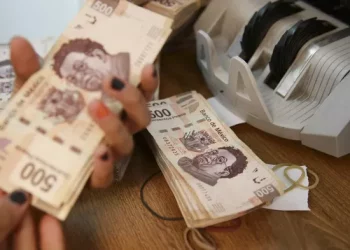Although most do not limit the number of trades, those who can manage risk know when to do more and when to do less.
Most people either listen to a so-called teacher or set the number of trades at will.
In fact, they don’t know how many traders are more suitable.
The number of trades, or position size, is directly related to returns.
The right posture should be based on the account’s capital position and risk tolerance.
Today, I’m going to share with you how many hands are appropriate for each transaction.
Before I INTRODUCE YOU, LET me CLARIFY SOME CONCEPTS, SUCH AS HAND, BIT, CONTRACT UNIT AND POINT.
Lot: unit of transaction quantity in.
In the trade, one hand represents 100,000.
In addition, there are mini, micro and nano hands.
Their sizes are 10000, 1000 and 100 bases, respectively.
For example, buying 0.01 means buying $1,000.
Position: The same position, represents the balance, can be divided into long position and short position.
A long position is a bullish buy and a short position is a bearish sell.
Trade hand number, position, position is a meaning.
Contract unit: The volume of a foreign exchange contract.
The contract unit for a foreign exchange contract is 100000 base currency.
For example, the contract unit of 1 is 100000, and the contract unit of 1/ is 100,000 pounds.
Dot (PIP) : used for accurate representation.
It is usually represented by five digits.
The smallest unit of change is a point (usually, the fourth decimal place represents a point).
When it represents the smallest unit of change in the exchange rate, which we often refer to.
The point spread is the difference between them.
For most currency pairs, such as euro/USD and pound/USD, the minimum change unit is 0.0001, but for some foreign exchange pairs, such as USD/JPY, the minimum change unit is 0.01.
How many hands per trade is reasonable?
We know that the number of trades is proportional to the potential return.
A light position may not yield much, but a heavy position is a worry, and a bad call can lead to serious losses.
For example, when you decide that EUR/USD is about to rise and are ready to buy, do you buy one or five lots?
Let’s start with the maximum and minimum number of trades.
For general, the minimum number of tradable hands is 0.01.
That’s quite a lot.
If you use a standard account, one hand represents $100,000 and 0.01 hands represent $1,000.
When you want to be more exciting, you can choose more hands, but the transaction amount cannot exceed the margin amount.
Some platforms will fix the number of trades that are optional.
Even if the platform does not limit, ordinary people would not dare to choose so many trading hands.
03 A more reasonable approach is to choose the number of trades according to the risk they can bear.
First, control the risk of a single trade.
The market recognizes that it can lose no more than 5 percent of its total capital on a single trade, leaving itself at least 20 trading opportunities.
Of course, you can also expand or reduce the risk of a single transaction according to your personality and risk tolerance.
We recommend that no more than 2 per cent of the account should be invested in each trade.
Calculate the maximum number of tradable trades based on the fact that a single trade does not exceed 2% of total funds.
Maximum number of trades available = Total profit *2% stop-loss price range.
For example, if you have $10,000 in your account, 2% of the total funds in your account is $200.
The maximum tolerable loss on the trade is $200, the stop loss price is set to 4 points (1 point is $10), and the maximum number of trades is 5 to reduce the risk of the position exploding.
If the position is profitable according to your expectations, you can also increase the position.
In homeopathic trading, you can use the pyramid method.
Each increase in interest is less than the last determined open interest, usually half of the previous open interest.
However, it should be noted that either a large position represents a large risk, depending mainly on capital losses.
For example, $10,000 of account capital can bear the risk, and 10000*2% of trading capital =200.
At this point, if the market shock is relatively strong, the need for a strong point spread.
You can build a position and take a 20 point loss!
When market shocks are relatively weak, you can build a 4-lot position and only take a 5-point loss.
Generally speaking, the number of trades is proportional to the potential return and risk.
The greater the number of trades, the higher the potential return and the greater the risk.
If you are just starting out, you can ignore the above method and start with the minimum number of hands.



























